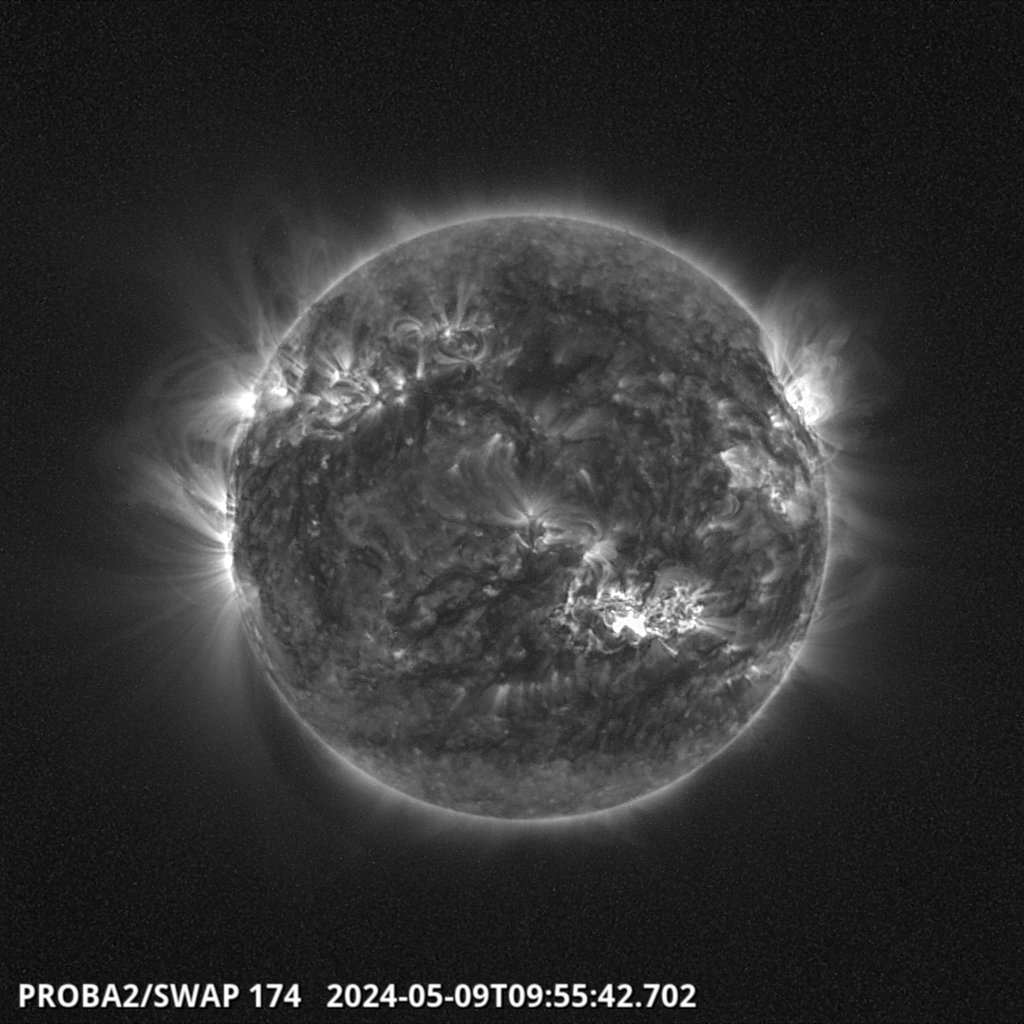A short update on today’s space weather status from Juha-Pekka Luntama, responsible for space weather activities at ESA’s Space Situational Awareness programme office at ESOC, Darmstadt, Germany.
Current space weather status
The Coronal Mass Ejection (CME) of 22 June appears to have arrived at Earth around 13:00 UT (15;00 CEST) today, when the solar wind speed measured by NASA’s ACE spacecraft jumped to 750 km/s. The arrival of the CME has generated only minor geomagnetic activity at high latitudes because the z-component (Bz) of the Interplanetary Magnetic Field (IMF) was varying around 0 nT at the time of the CME arrival, which is to say that the solar wind particles were effectively repelled by the magnetic field of the Earth. If Bz turns southwards (opposite to the direction of the magnetic field of the Earth) over the coming hours, the geomagnetic storm levels could increase during the night.
Proba Swap latest
 The >10 MeV solar proton flux has decreased steadily over the day and is now below the 1000 Proton flux unit (Pfu) event threshold.
The >10 MeV solar proton flux has decreased steadily over the day and is now below the 1000 Proton flux unit (Pfu) event threshold.
Next 24 – 48 hours
Only small C-class solar flares and no new CMEs have been detected during the last 24 hours. However, the Sun’s active region 2371 (responsible for the last two stronger flares and CMEs) is still magnetically connected with Earth. Thus, increased solar proton flux levels are still possible in the event of more flaring of this active region.
Best regards,
– Jussi

Discussion: no comments